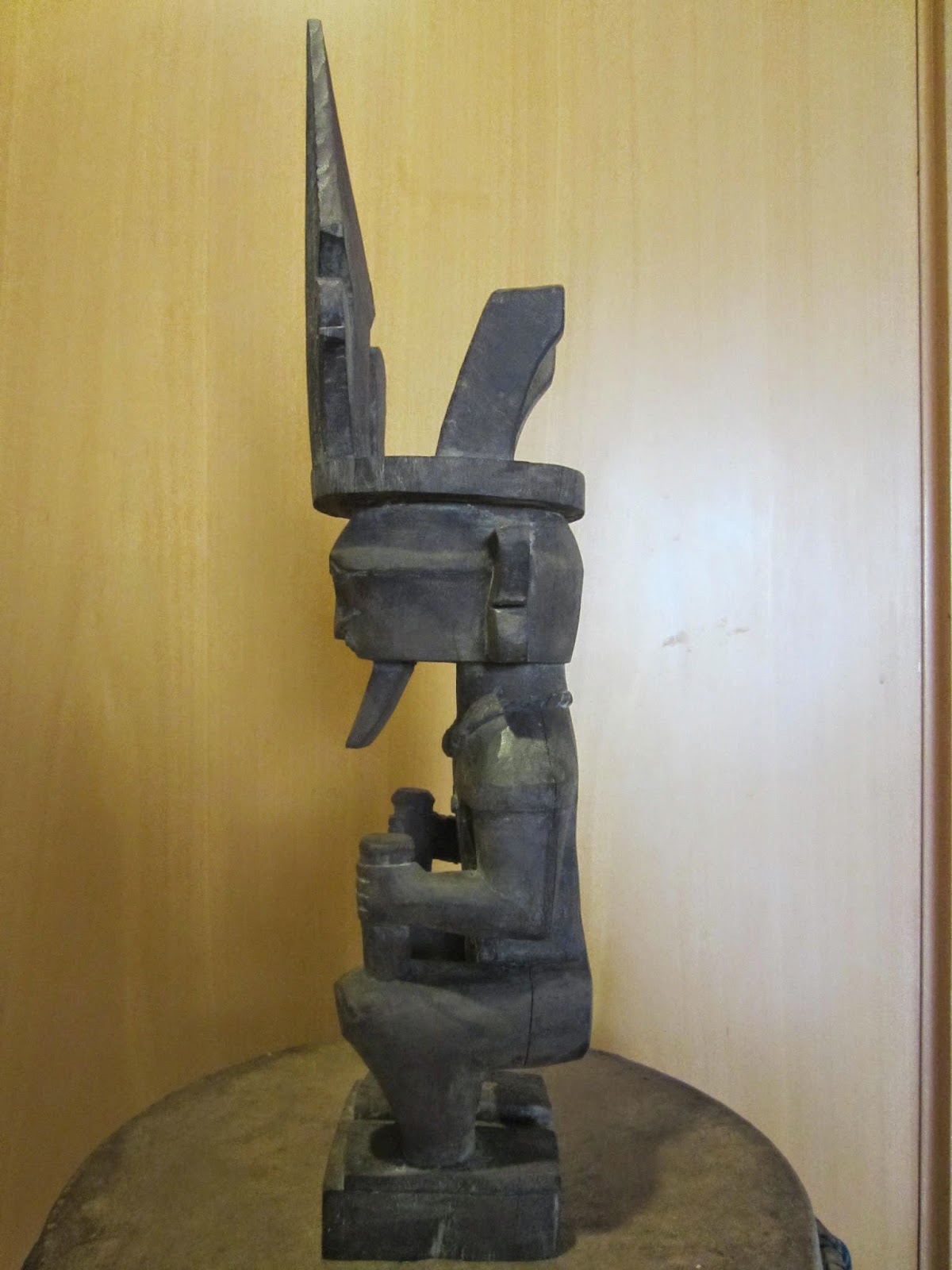

Adu Zatua
Origin: Nias island, North Sumatra, Indonesia.
Material: Wood.
Origin: Nias island, North Sumatra, Indonesia.
Material: Wood.
SOLD.
As believers of pure animism, Nias' ancestors embraced the spirits of natures as their gods. They made kinds of statues as the embodiment of the spirits they worshiped. Among them, are the kinds made of wood which they called adu. These statues were made to be placed in a special room in houses, yards and osalis (the houses of worships).
Adu Zatuas was made as male statues, worshiped as replacements for parents whom already passed away. To respect Adu Zatuas, offerings such as swine's brain, heart, liver and intestines would be brought and put inside Nahajo Mange (a worship bowl hold by the statue).
The natives believed that the spirits of their ancestors who had passed away would live inside Zatuas and protect the families. They also believed that a father stood as a protector and a physical life bringer and therefore had the right to give curses.
When a father died, a statue with his resemblance would be made of wood or stone. The reason was to keep his existence in the midst of his family. The sizes of the statues are variant, smaller ones would be kept inside the house while the big ones in the yards.
This male figure grasping two short rods wears an elaborate headdress symbolizing the tree of life.
Adu Zatuas was made as male statues, worshiped as replacements for parents whom already passed away. To respect Adu Zatuas, offerings such as swine's brain, heart, liver and intestines would be brought and put inside Nahajo Mange (a worship bowl hold by the statue).
The natives believed that the spirits of their ancestors who had passed away would live inside Zatuas and protect the families. They also believed that a father stood as a protector and a physical life bringer and therefore had the right to give curses.
When a father died, a statue with his resemblance would be made of wood or stone. The reason was to keep his existence in the midst of his family. The sizes of the statues are variant, smaller ones would be kept inside the house while the big ones in the yards.
This male figure grasping two short rods wears an elaborate headdress symbolizing the tree of life.






